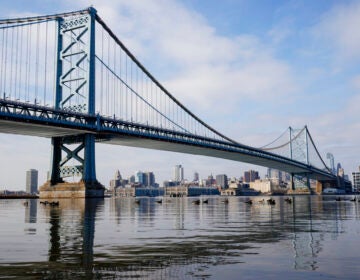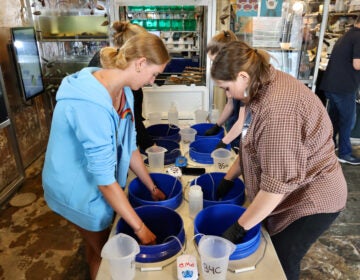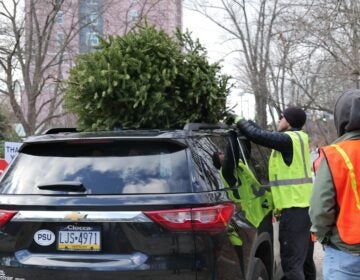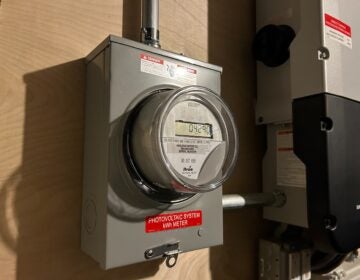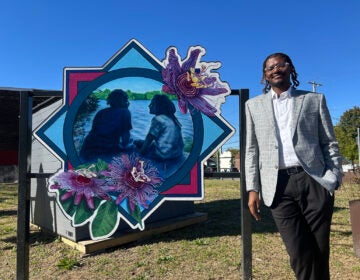Fishtown Seafood honors neighborhood identity while forging its own path
The seafood industry has been criticized for ethical violations. Fishtown Seafood wants to educate customers about where their seafood comes from.
Listen 2:45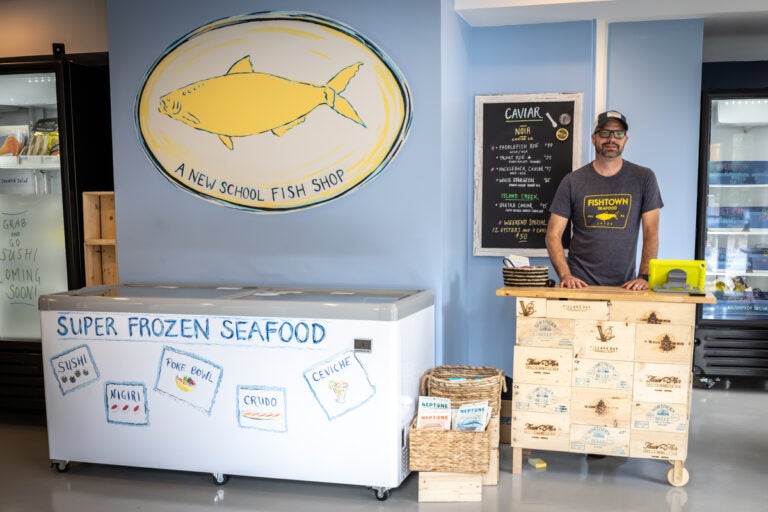
Bryan Szeliga is the owner of Fishtown Seafood, which has a location in Philadelphia’s Fishtown neighborhood and in Center City. (Kimberly Paynter/WHYY)
This story is part of the WHYY News Climate Desk, bringing you news and solutions for our changing region.
From the Poconos to the Jersey Shore to the mouth of the Delaware Bay, what do you want to know about climate change? What would you like us to cover? Get in touch.
Philadelphia’s Fishtown neighborhood got its name from its fishermen residents who caught an abundance of American shad from the nearby Delaware River.
To this day, signs with images of the fish species hang above the doors of row houses, apartments and businesses. But these images are merely a symbol of the past, as shad have depleted significantly due to dams, pollution and overfishing.
One local store is honoring the neighborhood’s identity, while forging its own path with its mission to offer “guilt-free” seafood products. Fishtown Seafood opened more than two years ago, and launched a second store in Fitler Square last month.
“I wanted to have a seafood market where consumers could come in and any species they wanted to buy, they could feel good it was free from [Illegal, unreported and unregulated] fishing, free from human rights issues or other sustainability issues,” said owner Bryan Szeliga.
When customers walk into Fishtown Seafood’s new Fitler Square store, they’re greeted with a hand-made yellow wall painting of a Hickory shad with its deeply forked tail and protruding lip.
Below the painting is the slogan “a New School fish shop.”
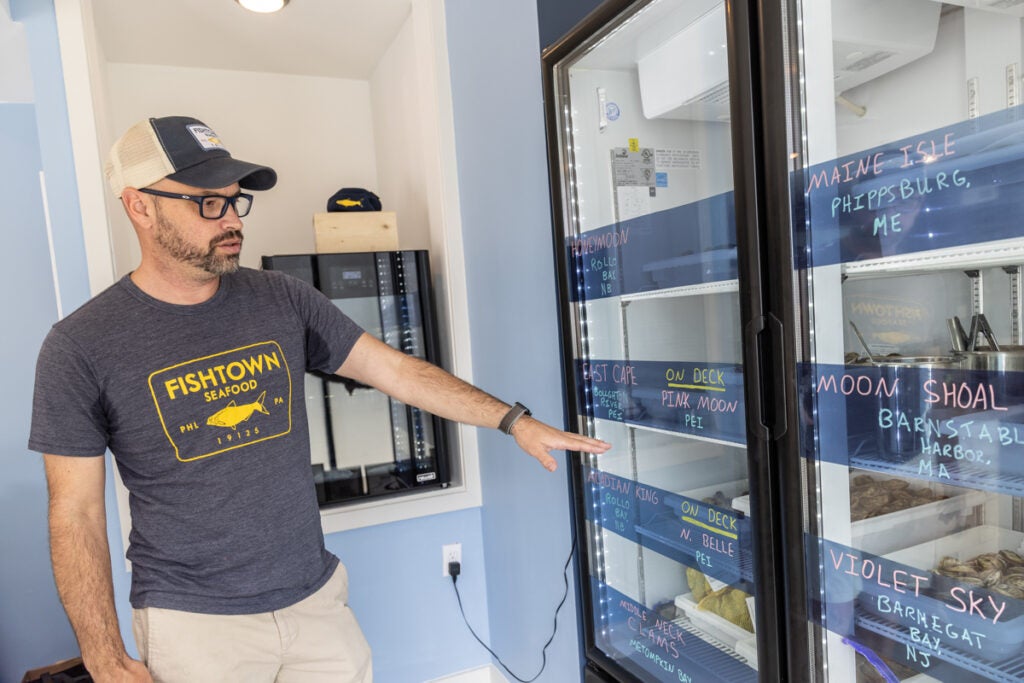
Szeliga said the words reflect his desire to be part of a change in the seafood industry, which faces several ethical issues. Some have criticized the global seafood industry over animal welfare issues, low-cost or forced labor, as well as illegal fishing and overfishing, which harms ecosystems and communities that rely on seafood as sustenance.
There also can be environmental costs —- from the carbon footprint caused by shrimp production, to fish farms that sometimes pollute waterways or may harm native species (though if done right, experts say aquaculture can have minimal environmental impacts).
At Fishtown Seafood, customers won’t see shellfish on ice, which may cause it to decompose faster, nor will they find live lobsters in tanks.
Szeliga doesn’t sell seafood that’s known to be illegally caught, or any species of fish that’s depleting.
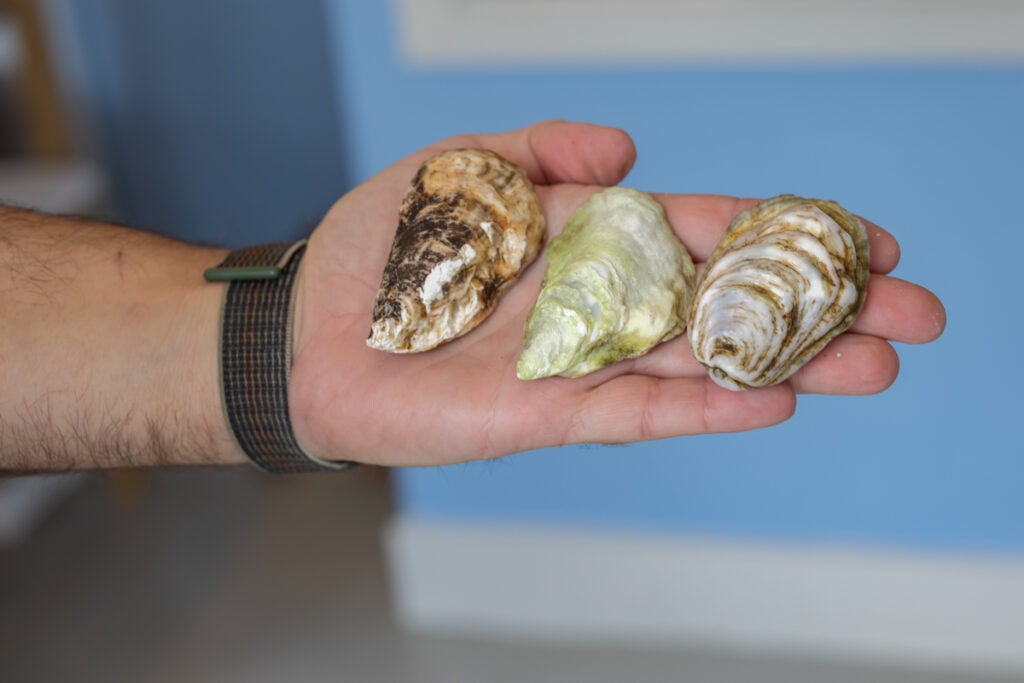
Instead, he focuses on chemical-free seafood that’s “super frozen” at very low temperatures to improve flavor, nutrients and freshness. Szeliga aims to reduce food waste by importing pre-butchered fish, and minimize the number of products that are transported by plane to reduce the store’s carbon footprint. He also sources from several trusted partners, including some small-scale artisanal fisheries.
“A seafood product can have a third-party certification, and be quote-unquote, ‘sustainable,’ but yet be a species that is not indigenous to where it’s being raised, put into a styrofoam box, flown on an airplane, and then 30% of that either goes into composting, but some places might put that into the garbage, but yet it’s ‘sustainable,’ and to me that’s not really a sustainable supply chain,” Szeliga said.
He also encourages customers to return their oyster shells to help boost populations of wild oysters — which rely on shells to spawn — and to protect the shoreline from the effects of climate change and sea level rise. Last year, Szeliga collected more than 1,300 pounds of shells for the oyster shell recycling program, led by the Partnership for the Delaware Estuary.
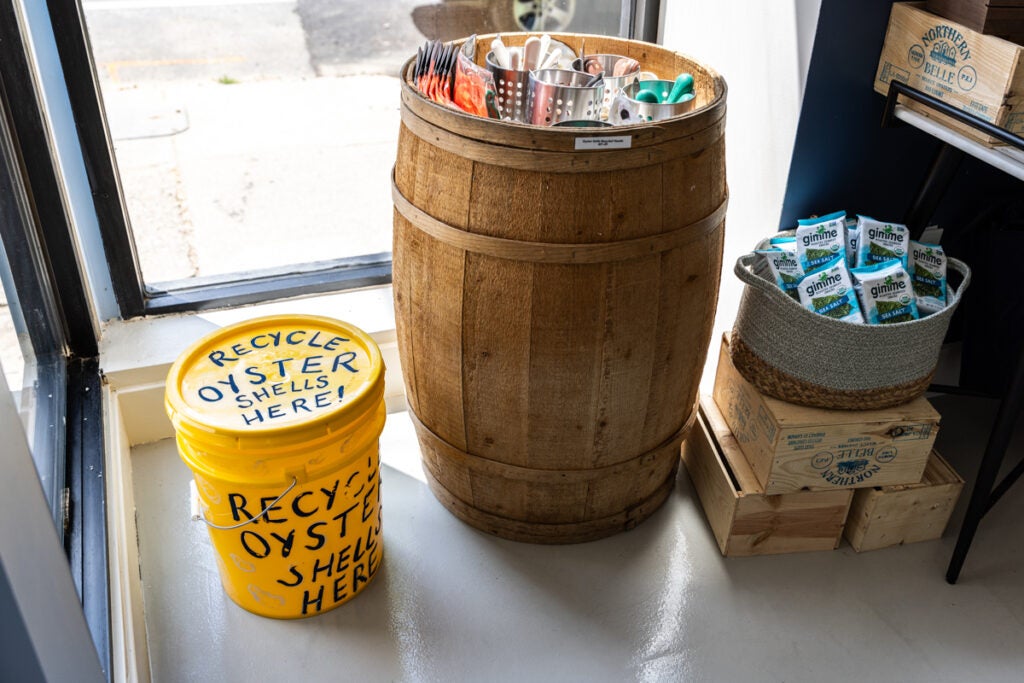
Fishtown Seafood is the only storefront that participates in the program, said Leah Morgan, the nonprofit’s estuary science coordinator.
“We’re really appreciative of the energy that [Szeliga] and his staff have given towards the program, and we’re happy to have them on board to help spread the word about the program and make sure people purchasing oysters are aware of the contribution that they’re making when they come back to return the shell,” she said.
Customer Craig Ebner, who returns shells to the store almost every week, said Szeliga’s passion is what makes his store stand out from any other. Ebner said he wasn’t aware of where his seafood came from until he took a shucking class from Szeliga. He said he was so inspired, he decided to tour an oyster farm in southern Virginia.
“You walk in, someone asks a question, and [Szeliga] is telling them so much more than what they probably expected — but in a good way,” Ebner said. “I didn’t get that from other places. If you ask, sure. But I think he really wants to tell people what he’s doing and why. For him, it’s a real passion, which I got from just taking a shucking class with him.”
Szeliga said he hasn’t been able to make an impression on every customer — particularly those who want to purchase shad, live lobsters or jumbo lump crab, the latter of which Szeliga said is sometimes difficult to determine whether it’s harvested legally. He said educating customers isn’t always enough.
“There is a high percentage of people who will just leave [the store]. People generally want to do things the way they have, and how they’ve seen things for so long,” Szeliga said. “When people come in open-minded and understand that we’re doing things differently … then we see that they will be able to use something like Jonah crab meat that’s harvested in the Gulf of Maine. It’s not a jumbo lump, but it is a fabulous eating product.”
Surveys find that many consumers don’t know a lot about where their seafood comes from, said Stefanie Colombo, a professor and researcher of aquaculture nutrition at Dalhousie University in Halifax, Canada. She said it will require not only a desire from consumers to better understand, but also transparency from producers, and innovation.
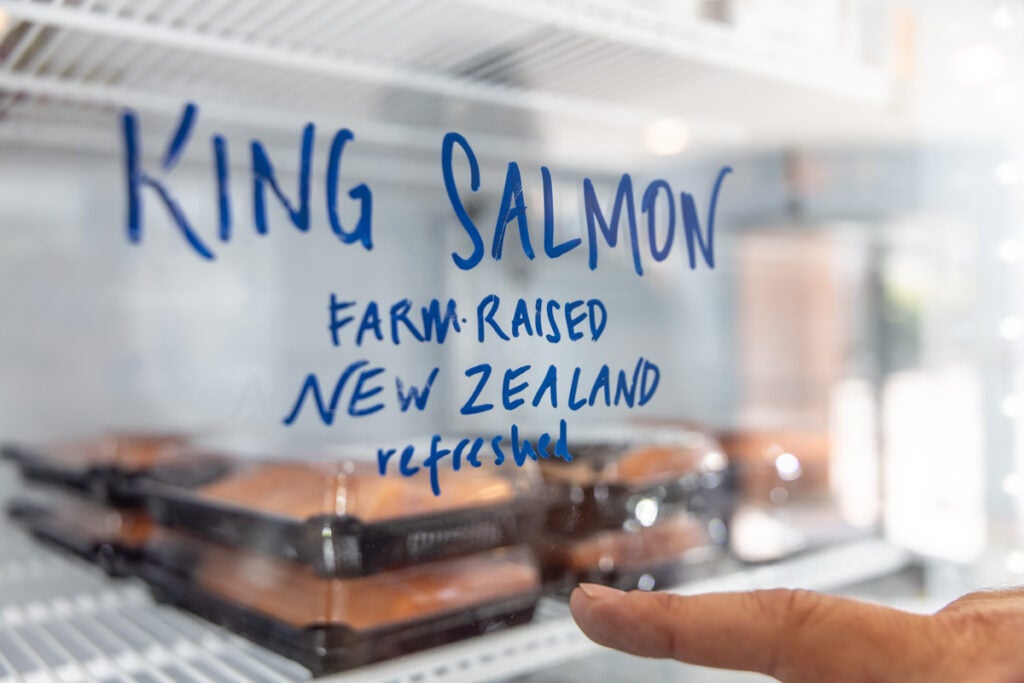
Colombo said she believes that eventually, people will be able to use an app to trace where their seafood was harvested, when it was processed and how long it’s been sitting in the freezer or fresh section. Until then, customers can look for Marine Stewardship Council or Best Aquaculture Practices certified seafood, research which seafood to avoid and ask marketplace owners questions.
“Whenever I go to a restaurant, I like to ask, ‘Has this salmon been wild or farmed?’ If it’s Atlantic salmon, it’s been farmed. But they’ll tell me it’s wild because they think that’s what I want to hear. So beware about that,” Colombo said. “You may not always get an accurate answer, unfortunately. So the best way is to do some of the research yourself.”

Get daily updates from WHYY News!
WHYY is your source for fact-based, in-depth journalism and information. As a nonprofit organization, we rely on financial support from readers like you. Please give today.



